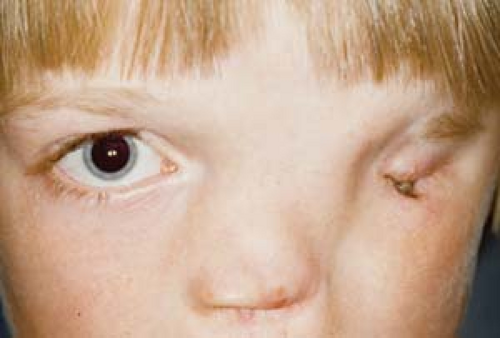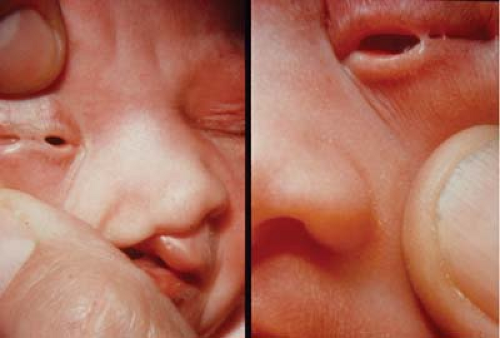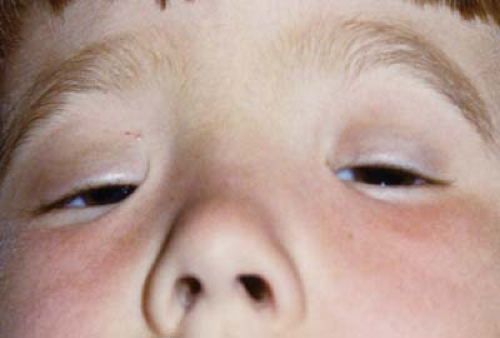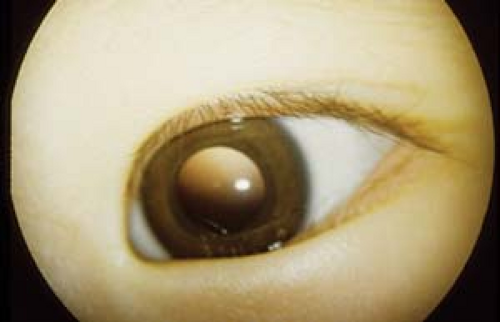Lids and Adnexa
Alex V. Levin
Thomas W. Wilson
Robert Pashby
Dan DeAngelis
The lids and adnexa are composed of the anterior and posterior lamella. The anterior lamella is composed of the skin, subcutaneous tissue (which is the thinnest in the body), cilia, and orbicularis muscle. The posterior lamella consists of the orbital septum, tarsus (including meibomian glands), and conjunctiva. Embryologically, the upper eyelids are derived from the frontonasal process and the lower eyelid is derived from the maxillary process of the face. The eyelids fuse at approximately 7 weeks’ gestation and typically open by the sixth month of gestation. The events that lead to eyelid separation in utero are thought to be related to either keratinization of the eyelid margin or secretions by the primitive meibomian glands. Proper development of the eyelids and adnexa is dependent on normal fusion of the eyelids. Inadequate fusion of the eyelids can result in eyelid colobomas and deficiencies in the adnexal structures, namely the cilia and tarsus. Similarly, abnormal separation of the eyelids can result in persistent bands to the globe or the opposing lid.
Early in the development of the adnexa, the meibomian glands are pluripotential structures that most commonly develop into glandular elements. However, they also have the potential to develop into follicular structures. If this occurs, then cilia are seen emerging from the posterior half of the eyelid margin, in the meibomian orifices. Thus, the patient will have an extra accessory row of anatomically normal eyelashes, which can cause significant ocular irritation.
The normal eyelid crease is formed by the projection of the levator fibers anteriorly, as they interdigitate among the fibers of the orbicularis oculi muscle. Congenital ptosis is caused by a dystrophic change in the levator muscle, resulting in a muscle that is variably functional. As such, the fibrosis in the muscle fibers results in an absent lid crease and in lid retraction on downgaze, both prominent features of congenital ptosis.
Lid abnormalities may occur in isolation or as part of systemic syndromes and disease processes. The underlying globe may also be abnormal. Lid and adnexal malformations may also be unilateral or bilateral. An understanding of these congenital and acquired lid disorders may assist the physician in understanding coexisting ocular and systemic abnormalities.
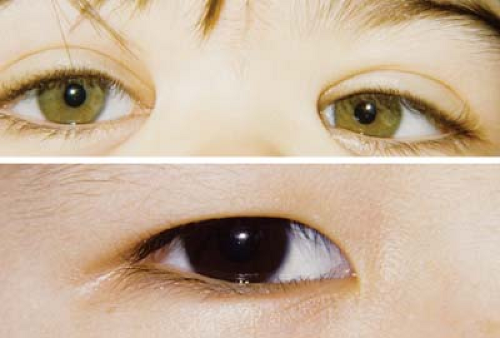 Figure 2.4 Epicanthus There are four types of epicanthal folds: supraciliaris (upper photo), palpebralis (not pictured), tarsalis (lower photo), and inversus (see Fig. 2.3). Although epicanthus inversus is more common in blepharophimosis, epicanthus is otherwise generally a nonspecific minor malformation often seen in normal individuals. Epicanthus is more prevalent in certain ethnic groups. |
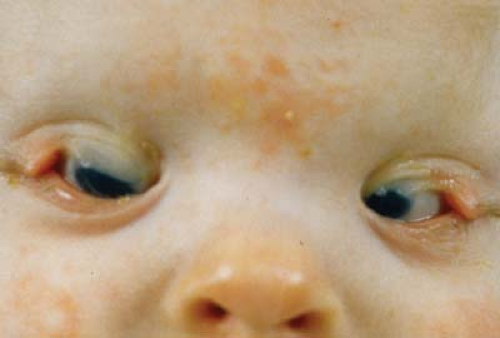 Figure 2.5 Coloboma Eyelid coloboma is a defect in the upper or lower eyelid margin. The most common location is in the nasal half of the upper lid and may be isolated or seen in association with Goldenhar syndrome. Characteristic lower eyelid colobomas are associated with Treacher Collins syndrome or mandibulofacial dysostosis (Chapter 14: Craniofacial, Figs. 14.14, 14.15 and 14.16), where the medial aspect of the lid downslopes gradually, followed by a sharp uprise to the normal lateral margin. When the medial aspect of the lid is involved with coloboma, the lacrimal puncta and canaliculus may be absent and the caruncle abnormal. As seen in this image, lid coloboma may also be associated with a form of symblepharon where conjunctiva and/or lid tissue may be attached to the globe with or without scarring of the cornea. |
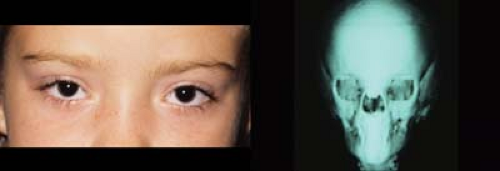 Figure 2.7 Telecanthus and Hypertelorism
Stay updated, free articles. Join our Telegram channel
Full access? Get Clinical Tree
 Get Clinical Tree app for offline access
Get Clinical Tree app for offline access

|
